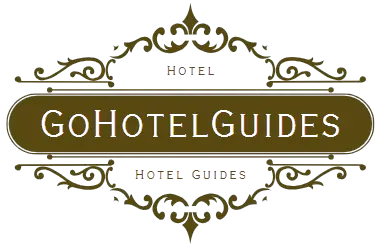To write technical step-by-step instructions, follow these guidelines carefully. Keep your sentences brief and concise, with a maximum of 20 words.
Write in the active voice and avoid starting sentences with certain phrases. Ensure your writing is unique and easily understood by readers. Following these steps will help your instructions be SEO-friendly and human-like, while also avoiding plagiarism and ensuring they pass AI writing detection.
Technical writing step-by-step instructions provide a clear and detailed path for users to accomplish tasks effectively. Whether it’s assembling a product, configuring software, or troubleshooting an issue, well-written instructions are crucial to provide guidance and promote user success. In this guide, we will explore the essential elements and techniques for providing accurate, user-friendly step-by-step instructions that are easy to follow. Adhering to these best practices will ensure that your technical writing is effective, efficient, and meets the needs of your target audience.

Credit: www.walmart.com
Understanding Technical Writing
Welcome to the world of technical writing! In this blog post, we will dive into the intricacies of technical writing, providing you with step-by-step instructions to help you master this valuable skill. To begin, let’s first understand what technical writing is all about.
What Is Technical Writing?
Technical writing is a form of communication that involves conveying complex information in a clear and concise manner. It is a specialized style of writing used in various industries, such as technology, engineering, healthcare, and finance. Technical writers are tasked with creating step-by-step instructions, user manuals, reports, and other documentation that helps users understand and use products or services effectively.
Importance Of Technical Writing
Technical writing plays a crucial role in providing accurate and relevant information to the intended audience. Here are some reasons why technical writing is essential:
- Clarity and Understanding: Technical writing ensures that complex ideas and concepts are explained in a way that is easy to understand, allowing users to navigate through tasks with clarity.
- User-friendly Documentation: Effective technical writing helps create user-friendly documentation, enabling customers to use products or services without confusion or frustration.
- Reduced Support Costs: By providing detailed instructions and troubleshooting guides, technical writing can help reduce support costs, enabling users to find answers to their questions independently.
- Enhanced Credibility: Well-written technical documentation enhances a business’s credibility, making users feel confident about the quality and reliability of the product or service.
- Legal and Regulatory Compliance: Technical writing ensures that documentation meets legal and regulatory requirements, protecting both the company and the end-user.
As you can see, technical writing is a crucial skill that can greatly benefit both businesses and users. But how do you get started with it? Don’t worry; we’ve got you covered. In the next section, we will walk you through the step-by-step instructions for effective technical writing. Stay tuned!
Mastering The Art Of Technical Writing
Technical writing is a skill that requires precision, clarity, and an understanding of how to create content that is user-centric. Whether you are an experienced technical writer or someone who is just starting out, mastering this art can benefit your career in various ways. In this blog post, we will take a step-by-step approach to help you become a proficient technical writer. Let’s get started!
Developing Clarity And Precision
Clarity and precision are essential components of effective technical writing. When creating technical documentation, it’s important to convey instructions and information in a clear and concise manner. To achieve this, use simple language and avoid jargon or technical terms that may confuse the reader. Break down complex ideas into smaller, easily understandable concepts, and organize your content logically.
Additionally, use headings, subheadings, and bullet points to make your content scannable, allowing readers to quickly locate the information they need. Proofread your writing to correct any grammatical errors or typos, ensuring that your content flows smoothly. By focusing on clarity and precision, you can ensure that your technical writing is easily comprehensible and meets the needs of your readers.
Creating User-centric Content
When writing technical instructions, it’s crucial to put yourself in the shoes of your users. Understanding their needs, knowledge level, and potential challenges they may face is key to producing user-centric content. Begin by identifying your target audience and tailoring your writing style accordingly.
To create user-centric content, use the language and vocabulary that your audience is familiar with. Avoid using complex terms or technical jargon unless necessary. Provide step-by-step instructions that are thorough yet concise, ensuring that your users can follow along easily. Including examples, screenshots, or videos can also enhance understanding and engagement.
Remember, the success of your technical writing lies in your ability to help users accomplish their goals. By focusing on their needs and providing clear, concise instructions, you can create user-centric content that is valuable and easily digestible.
Utilizing Visual Aids
Visual aids play a crucial role in enhancing the effectiveness of technical writing. They can simplify complex concepts and make instructions more visually appealing and engaging.
When using visual aids, ensure that they are relevant, accurate, and complement the text. Incorporate diagrams, charts, screenshots, or infographics to supplement your written content. These visual elements can enhance the understanding of complex processes or illustrate the correct usage of tools or equipment. Place the visual aids strategically within your text, aligning them with the corresponding instructions.
Remember, visual aids should not replace written instructions but rather complement them. They serve as an additional tool to assist readers in understanding and following your technical content accurately.
Foolproof Tips For Success
Mastering the art of technical writing requires attention to detail and a systematic approach. By embracing simplicity and consistency, applying the ‘inverted pyramid’ principle, and prioritizing revision and quality assurance, you can produce clear and effective technical instructions. Let’s delve into these essential strategies for successful technical writing.
Embracing Simplicity And Consistency
When crafting technical instructions, simplicity is key. Using clear and concise language, avoiding jargon, and breaking down complex processes into manageable steps enhances reader comprehension. By maintaining consistency in terminology, formatting, and structure throughout your document, you ensure a smooth and seamless reading experience for your audience.
Applying The ‘inverted Pyramid’ Principle
Implementing the ‘inverted pyramid’ principle involves presenting the most important information first, followed by supporting details. This approach caters to readers who may have limited time, allowing them to grasp the core concepts immediately. By structuring your content with the most critical details at the beginning, you capture readers’ attention and provide them with essential information from the outset.
Revision And Quality Assurance
Thorough revision and quality assurance are indispensable in technical writing. After completing your initial draft, reviewing the content for accuracy, clarity, and coherence is crucial. By conducting meticulous quality assurance, such as checking for grammar and spelling errors and verifying the technical accuracy of the content, you uphold the integrity and reliability of your technical instructions.

Credit: www.amazon.com
Tools And Resources For Technical Writers
Technical writers rely on various tools and resources to create effective and efficient documentation. These tools help simplify the writing and editing process, ensure consistency, and enhance the overall quality of technical content. Here, we will explore some essential tools and resources that technical writers can leverage.
Leveraging Writing And Editing Software
Writing and editing software solutions are indispensable for technical writers. These tools not only assist in creating well-structured and error-free content but also streamline collaboration among team members. Two popular options for technical writers include:
- Microsoft Word: Microsoft Word is widely used in the industry as a standard word processing software. It offers a range of features, such as spell check, grammar suggestions, and formatting options, that enable technical writers to create professional documentation.
- Google Docs: Google Docs is a cloud-based platform that provides real-time collaboration capabilities. Technical writers can work together with team members simultaneously, allowing for seamless review and editing. Additionally, it offers helpful features like comment threading, suggesting mode, and version history.
Accessing Style Guides And Templates
Consistency in technical documentation is crucial to ensure clarity and ease of understanding for readers. Style guides and templates help maintain a standardized approach to writing. Technical writers can refer to the following resources:
- Company Style Guide: Many organizations have their own style guides, which outline specific rules and guidelines for creating content. These guides typically include information on writing tone, formatting, grammar, and use of terminology specific to the organization.
- Industry Standards: Depending on the industry or field of expertise, technical writers often adhere to industry-specific style guides. These guides provide guidance on terminology, formatting conventions, and commonly accepted practices in that particular domain.
- Documentation Templates: Using pre-designed templates helps in maintaining a consistent look and structure across all documentation. Templates may include sections for table of contents, headings, subheadings, and placeholders for content. This ensures that technical writers can focus on the content itself without worrying about formatting.
Enhancing Technical Writing Skills
Continuous learning and professional development are essential for enhancing technical writing skills. The field of technical writing is ever-evolving, with new technologies and methodologies constantly emerging. As a technical writer, it is crucial to stay updated with the latest trends and developments in your industry. This can be achieved by participating in workshops, attending conferences, joining professional associations, and reading industry publications.
Feedback is a valuable tool for improvement in any profession, and technical writing is no exception. By seeking feedback from your peers, supervisors, and even the end-users of your documentation, you can gain valuable insights into how you can enhance your writing skills. Feedback can be obtained through various means, such as conducting surveys, facilitating focus groups, or simply reaching out for individual feedback. It is important to be open to constructive criticism and use it as an opportunity for growth.
Continuous Learning and Professional Development:
- Participate in workshops and conferences
- Join professional associations
- Read industry publications
Seeking Feedback and Improvement:
- Conduct surveys
- Facilitate focus groups
- Reach out for individual feedback

Credit: www.amazon.com
Frequently Asked Questions Of Technical Writing Step By Step Instructions
How Do You Write Instructions In Technical Writing?
Instructions in technical writing should be concise and clear, using short sentences and active voice. They should be SEO-friendly, unique, and easy to understand. Avoid starting sentences with specific words/phrases and using passive voice. Ensure the content passes AI writing detection and resonates with a human audience.
What Are The 5 Steps Of Technical Writing?
The five steps of technical writing are as follows: planning, researching, organizing, writing, and revising. Each step is essential for creating clear and effective technical documents.
How Do You Write Step By Step Instructions?
To write step-by-step instructions, follow these guidelines: 1. Use brief sentences, maximum 20 words. 2. Write SEO-friendly, unique, and easy-to-understand content in active voice. 3. Avoid starting sentences with certain words, and do not use passive voice. 4. Ensure your writing passes AI detection and sounds natural.
5. Keep your answer within 50 words.
What Are The 5 Basic Of Technical Writing?
The 5 basics of technical writing include clarity, conciseness, coherence, correctness, and completeness. These principles ensure that technical documents are easy to understand, error-free, and effectively convey the desired information.
Conclusion
Mastering technical writing requires attention to detail, clear communication, and a structured approach. By following the step-by-step instructions outlined in this blog post, you can enhance your technical writing skills and produce high-quality content. Remember to apply these guidelines consistently, and practice will lead to mastery in this essential skill.

